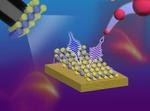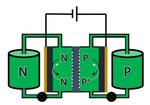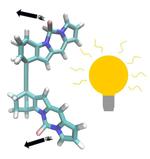Other

“Ever since the discovery of the two-dimensional form of graphite (called graphene) almost twenty years ago, interest in 2D materials with their special physical properties has skyrocketed. Famously, graphene was produced by exfoliating bulk graphite using sticky tape. Although it …

“In organic solar cells, carbon-based polymers convert light into charges that are passed to an acceptor. This type of material has great potential, but to unlock this, a better understanding is needed of the way in which charges are produced …
“Finding paves the way for new generation of opto-electronic applications. Quantum dots are clusters of some 1,000 atoms which act as one large ‘super-atom’. It is possible to accurately design the electronic properties of these dots just by changing …

“The intermittent supply of green electricity requires large-scale storage to keep our power grids stable. Since normal batteries do not scale very well, the idea of using flow batteries, which store electricity in a fluid is attractive. However, these batteries …

“Light-driven molecular motors have been around for over twenty years. These motors typically take microseconds to nanoseconds for one revolution. Thomas Jansen, associate professor of physics at the University of Groningen, and Master’s student Atreya Majumdar have now designed …

“Physicists in Israel have created a quantum interferometer on an atom chip. This device can be used to explore the fundamentals of quantum theory by studying the interference pattern between two beams of atoms. University of Groningen physicist, Anupam Mazumdar …

“Classic computers use binary values (0/1) to perform. By contrast, our brain cells can use more values to operate, making them more energy-efficient than computers. This is why scientists are interested in neuromorphic (brain-like) computing. Physicists from the University …

“In spintronics, the magnetic moment of electrons (spin) is used to transfer and manipulate information. An ultra-compact 2D spin-logic circuitry could be built from 2D materials that can transport the spin information over long distances and also provide strong spin-polarization …
“Plastics are among the most successful materials of modern times. However, they also create a huge waste problem. Scientists from the University of Groningen (The Netherlands) and the East China University of Science and Technology (ECUST) in Shanghai produced different …

“Plants and photosynthetic bacteria catch sunlight via molecular antennas, which then transfer the energy to a reaction centre with minimal losses. Scientists would like to make molecular wires that can transfer energy just as efficiently. Scientists at the University of …

